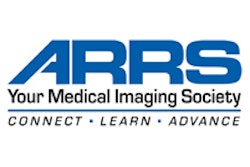This year's ramp-up of the American Board of Radiology's new Maintenance of Certification (MOC) program has come as a rude surprise to many diagnostic radiologists who -- having spent thousands of dollars to take and pass the boards in 2002 or 2003 -- are now being asked by the ABR for an immediate payment toward their 10-year recertification.
The ABR is seeking only $400 from recent ABR diplomates for their initial enrollment in the MOC program. Nevertheless, the request comes as a rather unpleasant shock to radiologists still recovering from their impoverished years in training, and who generally hadn't expected another ABR debt for years to come.
These early recipients of time-limited certificates in diagnostic radiology will actually owe less than residents who pass the board exam from now on, however. The ABR is prorating the $2,800 in fees based on a diplomate's time in the MOC program, which won't be fully implemented until late 2005 or early 2006.
New diplomates should expect to receive an MOC enrollment letter about a year after passing the board exam, said Dr. Steven Leibel, current president of the ABR.
Meanwhile, the ABR is trying to get the word out that radiologists need to give the board their new addresses if they relocate, so that the board can keep them apprised of the MOC program and enable them to avoid recertification lapses. According to Leibel, about 50% of the correspondence sent by the board is being returned because of out-of-date addresses.
"It's important to have people go on the Web site (www.theabr.org) and submit their addresses by e-mail to [email protected]," said Leibel, adding that ABR is delaying some mailings of information to diplomates in order to develop a better database of addresses.
Wide impact
Other longtime practitioners are also feeling the pinch from recertification. Primary certificate-holders in radiation oncology will soon be undergoing recertification, as the first 10-year limited certificates in that field were issued in 1995.
Radiologists who received the first 10-year "certificates of added qualifications" in pediatric radiology and interventional radiology back in 1994 spent $1,400 for recertification exams this year.
Some were reportedly disturbed to learn, however, that their next recertification will cost almost twice as much, with the ABR assessing an immediate $400 MOC enrollment fee and a "midcycle" fee of up to $1,000 prior to the next $1,400 exam fee.
Leibel defended the MOC cost structure in an interview this week with AuntMinnie.com.
"The board is a nonprofit organization, and revenue has to balance expenses," he said. "We've done a lot of analyses in the past for primary certificates on the cost per candidate, and we used the same process for the MOC."
Moreover, Leibel said, the ABR's assessment of $2,800 is near the $2,688 median for medical specialties. Anesthesiologists pay the top rate of $3,800 for maintenance of certification.
Subspecialty scenario
The cost concerns are ultimately ameliorated by the fact that most radiologists will earn very good salaries over time. But for radiologists in the early stages of their career, the immediate enrollment fee for their primary certificate maintenance may also serve to dampen interest in subspecialty certifications.
Having recently finished an interventional radiology fellowship, Dr. Stephen Humes was already vacillating over whether to pursue the ABR's subspecialty certificate in that area.
"My concern is that now I'm having to pay this money for a (general) recertification, and that makes me hesitant to spend additional money on a certificate of additional qualification," said Humes, a 2003 ABR diplomate now entering private practice in Colorado.
Clarifying one major potential source of confusion and concern, Leibel stressed that ABR diplomates will be responsible for only one recertification every 10 years, regardless of how many primary and subspecialty certifications they may obtain.
"It's not designed to be onerous," said Leibel, who also stated that 80% of the exam for subspecialty diplomates would cover their area of specialty.
However, he acknowledged that the process has yet to be fully developed, especially for those rare radiologists who hold multiple subspecialty certificates.
Radiologists react
The ABR largely dodged the issue and hassle of recertification until it could no longer do so, as the American Board of Medical Specialties began mandating MOC for all its member boards.
Diagnostic radiology was perhaps the last specialty to implement time-limited certifications, which have been the norm for surgeons since 1969 and for family practitioners since 1974. Still, the final arrival of radiology recertification raises troubling philosophical and practical questions for practitioners.
A group of six radiologists -- three attendings, two residents, and one fellow who gathered at the University of Oklahoma Health Sciences Center (OUHSC) -- gave their thoughts on the ABR's program to AuntMinnie.com by telephone last week.
Not surprisingly, those who had passed the boards in the era of lifetime certification expressed some relief that they probably would not have to relive that experience in the future. They were also more willing to express concerns about a program administered by an entity that can make or break a career in radiology.
Attending radiologist Dr. Cliff Sweet offered a philosophical objection to the concept of recertification.
"As we go toward more testing, more paperwork, and more hassle, we become less professional and more technically proficient -- good at taking tests," he said. "That's going to encourage those types of people, and those don't necessarily make the best radiologists."
OUHSC staff radiologist Dr. Robin Acker added that recertification could easily become the additional hassle that spurs radiologists to retire earlier from practice. "I remember what it was like studying for these things," said Acker, who gained board certification in 1987.
The impact could be particularly acute if state licensing boards or other entities that issue practice privileges begin requiring recertification by radiologists who are otherwise holders of lifetime ABR certificates, according to Acker.
In fact, some "grandfathered" radiologists have already sought voluntary recertification due to requirements by various states or payors, Leibel said, although he couldn't specify the states or entities making such demands.
Past seekers of voluntary recertification endured the worst ordeal, having to undergo yet another version of the dreaded oral boards. The ABR is now moving toward multiple-choice computer-based tests -- with no oral component -- for all future recertification exams, Leibel said.
Level field?
Another major concern raised by the Oklahoma practitioners was whether any sort of general recertification was really viable for diagnostic radiology.
"I think a good argument can be made that it is impossible to have a fair recertification exam," commented OUHSC attending Dr. Douglas Beall. "Radiology is in a unique spot because we have to become really subspecialized to give other specialties adequate service. So that makes a general certification exam for radiology even more difficult."
Leibel agreed that even informal subspecialization presents a challenge in recertification, but said the board was trying to address the issue by shaping the exams around another element of the MOC process, the self-assessment modules (SAMs).
Diplomates will be required to complete 20 SAMs prior to their 10-year recertification, and the recertification exam will be tailored around the SAMs they have completed, Leibel said.
Because the SAMs are expected to come from radiology's many societies, such as the Radiological Society of North America and the American Roentgen Ray Society, they will generate CME credits that will also go toward the 500 hours of CME required for recertification.
More information
The MOC process will also require an "assessment of performance in practice," which is currently unspecified but may include options such as error reductions, double-readings, customer-satisfaction surveys, or report-turnaround documentation by radiologists, Leibel said.
Many details of the MOC program remain in development. Radiologists seeking more information can check out the MOC white papers on the ABR Web site. The board is also supplying papers on the program to all the major radiology journals next year, he said.
Ultimately, Leibel expects that radiologists will become accustomed to the recertification and MOC process, which has become a necessity as patient advocates and others demand more quality assurance in medicine.
"If we don't do this, someone else is going to do it for us," he said. "We don't want to be marginalized by all these other groups that are trying to improve quality; we want to be part of that."
"As soon as all these programs are really well defined and concrete, then a lot of the mystique and uncertainty will go away," Leibel said. "I would just like to get the word out (to radiologists) that recertification is the right thing to do, and to give us your addresses."
By Tracie L. Thompson
AuntMinnie.com staff writer
October 19, 2004
Related Reading
ABR issues nuclear radiology update, October 14, 2004
Preparing for the ABR oral exam: a resident's guide, February 19, 2004
ABR and RRC activities: radiology's regulators talk, May 17, 2002
Copyright © 2004 AuntMinnie.com



















